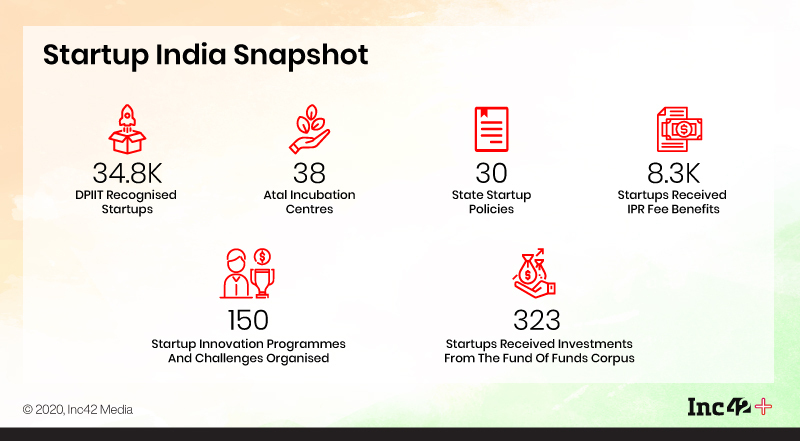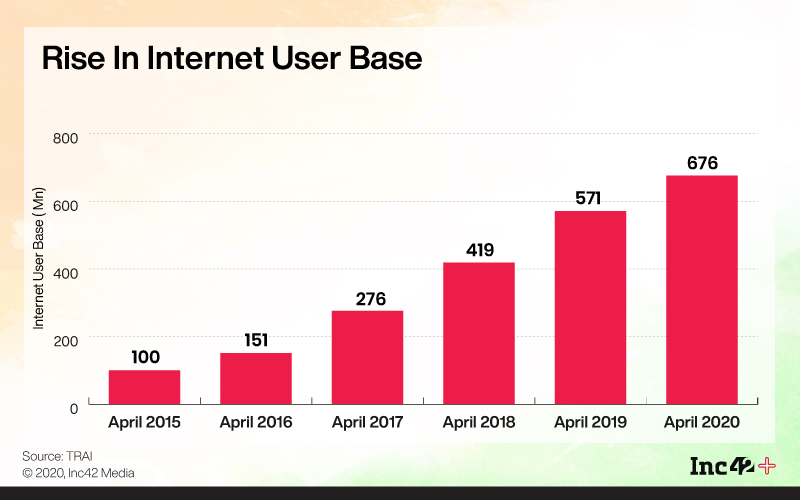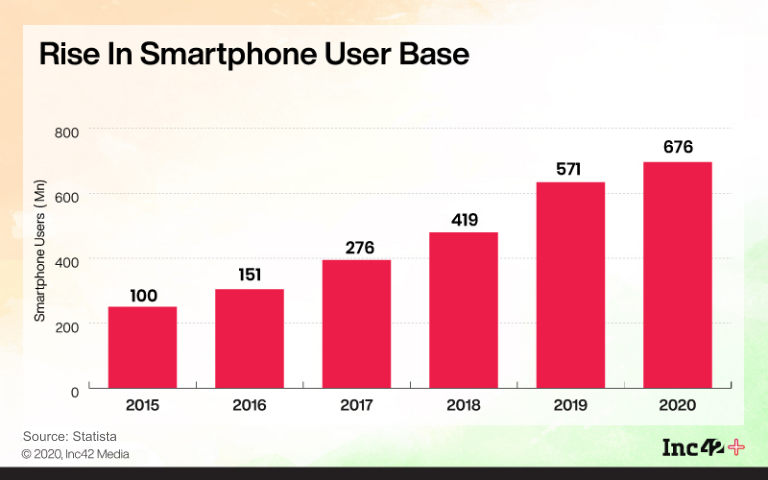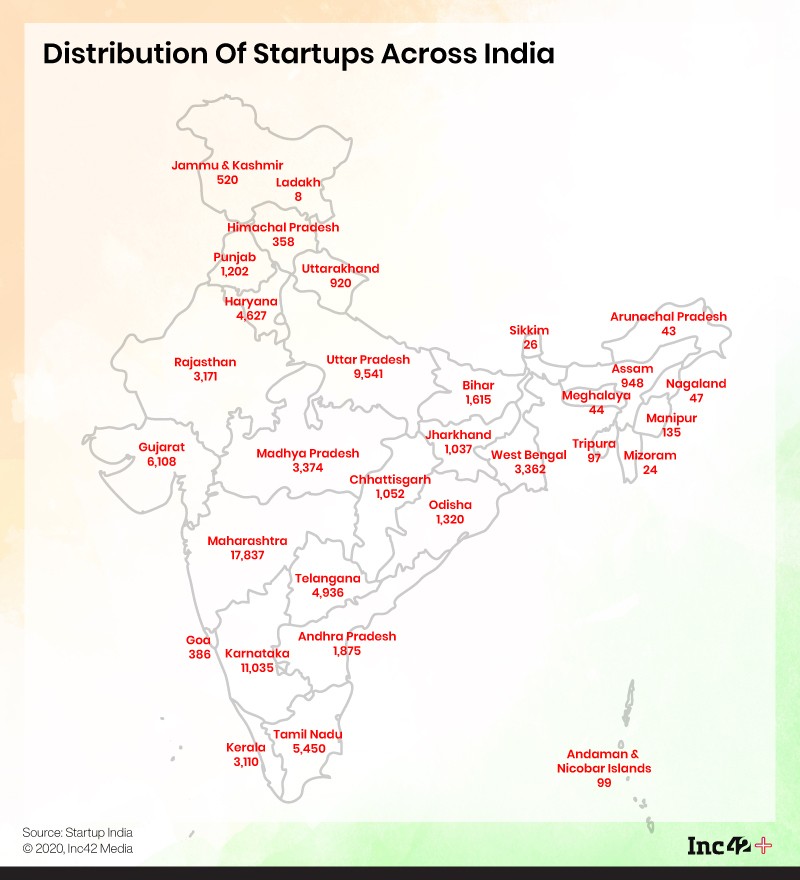As we usher in India’s 74th year of independence in 2020-21, here’s the journey of the startup ecosystem so far
“Where the mind is without fear and the head is held high
Where knowledge is free
Where the world has not been broken up into fragments
By narrow domestic walls
Where words come out from the depth of truth
Where tireless striving stretches its arms towards perfection
Where the clear stream of reason has not lost its way
Into the dreary desert sand of dead habit
Where the mind is led forward by thee
Into ever-widening thought and action
Into that heaven of freedom, my Father, let my country awake.”
~ Rabindranath Tagore
August 15 — it is a monumental day for all of us and the same holds true for startups too. On this very day, in 2015, Prime Minister Narendra Modi coined one of his many popular slogans — ‘Startup India, Standup India’. In the past five years, this slogan has gone on to become the beacon for one of India’s most successful government-backed projects — Startup India.
Launched in January 2016, the scheme came with a slew of policy reforms such as funding support, bilateral government collaborations with various countries, and a consistent messaging of hope and pride in Indian tech. Some of the prominent promises of Startup India included state level startup policies, pro bono services (like free credits to access cloud services, legal and banking support), learning and development programmes and building a spirit of entrepreneurship.
“I attended the inspirational launch of Startup India in Delhi. I experienced it in practice in the form of the Atal Tinkering Lab (ATL) and Atal Incubation Centre at Sikkim Manipal University. Startup India project is definitely making a positive impact on the lives of thousands of youngsters through the incubation program,” Abhishek Rungta, President of TiE Kolkata, told Inc42.

Kickstarting The Startup Dream
While Startup India was not the beginning of startups in India, it is certainly the most coordinated effort in India to boost startups. But it’s still a work in progress. As Rungta pointed out, many startups in West Bengal and other states have not been able to see much impact of these policies, but that’s just due to the disparity in implementation at times.
The real value of Startup India can be seen in how it transformed the image of startups among the younger generation. AI-based cancer diagnosis startup NIRAMAI cofounder and CEO Dr. Geetha Manjunath believes so too.
“We have seen a remarkable change in the way startups are perceived by society. I think it is a huge change in the mindset of people from all walks of life. Today, startup representation can be seen in every discussion. This huge change has primarily been made possible because of the national and state-level emphasise on the importance of startups,” she told Inc42.
Similarly, Rajat Jain, founder of Sunfox Technologies, said that before Startup India, there were hardly three to four startups in his home state of Uttarakhand. Since the state government started offering seed capital to startups in coordination with Startup India, entrepreneurship became a viable opportunity for many innovators in the state.
According to Ramesh Loganathan, professor at IIIT Hyderabad and former chief of Telangana State Innovation Cell, the immediate tangible benefits may have been limited, but he believes the programme did help rally around and better organise the whole startup ecosystem.
Between 2016 and August 2020, Startup India recognised over 34.8K startups. Among these, 8.3K startups received intellectual property rights (IPR) fee benefits, while over 2.6 Lakh people enrolled in the entrepreneurship-focused learning courses offered by upGrad and Startup India. Further, over $1 Mn worth benefits were given to 5.5K startups as part of over 150 startup innovation programmes and challenges organised by Startup India.
Among the many promises under Startup India, the government pledged to set up a fund of funds for startups, pooling together funds from various foreign institutional investors as well as alternative investment funds (AIF). Till date, over INR 3,123 Cr has been committed by the government to 47 venture capital firms and INR 3,476 Cr has already been invested in 323 startups from the fund of funds corpus managed by Startup India through Invest India.
In Feb 2020, India was ranked 63 among 190 countries on ease of doing business rankings by the World Bank, as compared to 142 rank of India in 2015. According to the World Bank, the three main reasons for this jump in ranking were India’s reduced cost of starting a business, better access to building permits and electronic submission of documents for import and export audits.

The government’s consistent efforts to make business regulations easier for startups have definitely shown results but still there are areas where startups continue to struggle. For instance, Rungta noted that there should be tax rebates on angel investment the way the UK and several other countries provide. “This is needed, so that angel investments are encouraged in the country. Angel investments are a high-risk category and should be promoted more aggressively,” he added.
Angel tax is an income tax levied on the funding received by unlisted startups by issuing shares at a price higher than the fair market price. Over the years, many startups have raised concerns over the classification of funding as income and investment. In August 2019, the finance minister exempted DPIIT-registered startups from the angel tax requirement. However, those not registered continue to come under its purview.
The Startup Story In Digital India
Even though Startup India has been the flagbearer for the startup ecosystem in India, without enabling initiatives such as Digital India and Make in India, the reach of startup products and services would be severely limited. Together, this troika has set Indian on a path to a digital future.
While Make In India was devised to transform India into a global design and manufacturing hub from an import-centric consumer market, the Digital India programme was about reviving infrastructure projects and bringing a measure of digitisation in every aspect of life — from finance to education to commerce and governance.
Together, Digital India and Make In India served as a powerful call to action for Indian innovators, citizens and business leaders. And just as importantly, it was an invitation to potential partners and investors around the world that India was ready to become more than just a massive consumer market.
From around 233 Mn in 2014, India today has over 504 Mn active internet users. Much of the credit for this goes to the launch of Reliance Jio, which completely changed the telecom and mobile internet game in 2016. As of July 2020, TRAI reported 676 Mn broadband subscribers in India, including both wireless and wireline connections.

Another pillar in India’s digital economy growth has been the fact that Indians have shown tremendous appetite for smartphones and mobile devices. Exactly a year ago, India emerged as the fastest growing smartphone market in the world, while in January 2020, India surpassed the US to become second largest smartphone market in the world.

Though it is undeniable that we have come far from where we started, the vast digital divide in India is still a lingering concern. Aside from remote villages and towns, internet connectivity has even posed a challenge for tech startups in states such as Goa.
With China being sidelined for a slew of reasons — including the pandemic — India has emerged as the next major destination for electronics manufacturers and the government has placed emphasis on Indian becoming an exports hub in this regard. So the opportunity is there for the taking, will the infra gaps be filled in time to get the best of the timing?
That’s a question, we at Inc42 will constantly strive to answer in everything we do. And honestly, we want each one of our loyal readers to be a part of this journey. With that hope in our mind, we are offering the Inc42+ membership at a 50% discount today — see you on the other side of the paywall.
Making India Enterprising
In addition to building the basic internet infrastructure, India’s efforts towards digital payments have been a prime highlight of the overall Digital India push. India Stack, which is essentially just a collection of open APIs, has revolutionised Indian banking and fintech startups.
Starting with Aadhaar in 2009, India Stack has been fast bridging the gap between Tier 1 India and Tier 2, Tier 3 cities. India Stack, along with Jan Dhan Yojana bank accounts, has been instrumental in bringing digital banking to the many remote parts of India. Thanks to the eKYC and Aadhaar, a slew of fintech companies have found footing in India.
However, the picture is not all rosy, many fintech companies have noted that the fintech regulations in India continue to change every few months making it a somewhat tumultuous business environment.
In the past couple of months, the focus has fallen on Indian software products. Perhaps the biggest acknowledgment of India’s digital ambitions came with the ban on over 100 Chinese apps, which brought the digital economy into the geopolitical battle.
The Chinese app ban was followed by Modi’s clarion call for Vocal for Local and Atmanirbhar Bharat, which has flooded the Indian market with hundreds of new homegrown apps in a matter of months. Interestingly, most of these apps have noted their ‘Made In India’ tag as the differentiating factor in the market. While so far the focus has been on manufacturing goods and products in India, the new wave of Indian apps is perhaps the best example of how Make in India and Digital India are interconnected.

Where The Head Is Held High
After Microsoft and Twitter, Reliance Jio Platforms is said to be lining up to acquire a piece of TikTok’s business in India, which could turn around ByteDance’s fortunes in the country.
While discussions between the companies are said to have begun in late July, ByteDance has been looking for a way out of the Indian government ban to re-enter the Indian market. It has frozen hiring and is said to be reviewing some senior management roles in India.
With over 2,000 employees, ByteDance runs a massive ship in India with offices in Bengaluru, Delhi NCR and Hyderabad as well as several partner companies. Many of its employees are either quitting their positions or looking to exit to join rivals such as Mitron, Chingari, Bolo Indya and others.
Meanwhile, Indian aerospace startup Skyroot Aerospace has successfully test-fired an upper-stage rocket engine, which is the third and fourth stage of a traditional multi-stage rocket, fired at high altitude and designed to operate with little or no atmospheric pressure. Skyroot has thus become the first Indian private company to demonstrate the capability of building an indigenous rocket engine.
Back on earth, the Niti Aayog has been commissioned to develop a network of banks and fintech companies who could give small-ticket loans to bottom-of-the-pyramid borrowers such as farmers, street vendors and labourers. Will this increase access to credit with fintech startups such as PhonePe, Kissht and Pine Labs working alongside Niti Aayog?
Where Tireless Striving Stretches Towards Perfection
Perfection is the name of the game when it comes to product design at hundreds of new-age D2C brands in India. The direct to consumer revolution has shown that entrepreneurs in India are not just great at ideation and maximising resources, but they are also getting hands-on when it comes to product design and development from the first stage till the last.
The pandemic has become a catalyst for many brands to go the D2C way and open online stores and for existing brands to scale up beyond metros. For D2C brands with a focus on expanding to Tier 2, 3 cities, the reinvigorated call for Vocal for Local has created a readymade audience. D2C brands are quickly jumping on to vernacular content for marketing as well as videos with social media influencers to reach a wider audience.
And while most D2C brands are more or less using the same marketing strategies to reach their audience, one major differentiator is product design. D2C brands have invested heavily in building agile consumer insights teams that connect with customers and inform the journey of product development.
“Our new product development (NPD) team has a clear DNA of taking customer insights and marrying it to innovation and bringing it to the shelf. The NPD team has a clear KPI of ensuring that at least 70% of our products are ‘first time in India’ and created specifically for the Indian women’s needs,” Smita Baishakhia, head of new product development, MyGlamm, told Inc42.
Check out the Inc42+ Playbook on India’s D2C Rush to get the full lowdown on this burgeoning segment and the future of Indian retail, being driven by real innovators all over the country. For anyone hopeful about India’s economic future, the D2C sector is something that should fill our hearts with hope.
And with that thought and the dream of a self-sufficient and progressive India, we wish all our readers a very happy Independence Day. May our aspirations take us far.
Yatti Soni & The Inc42 Team
































 Ad-lite browsing experience
Ad-lite browsing experience